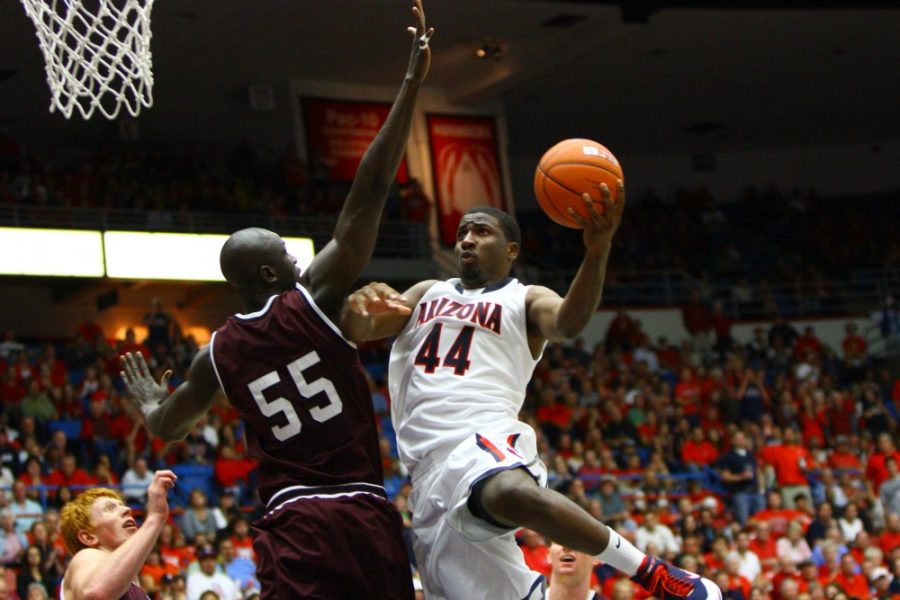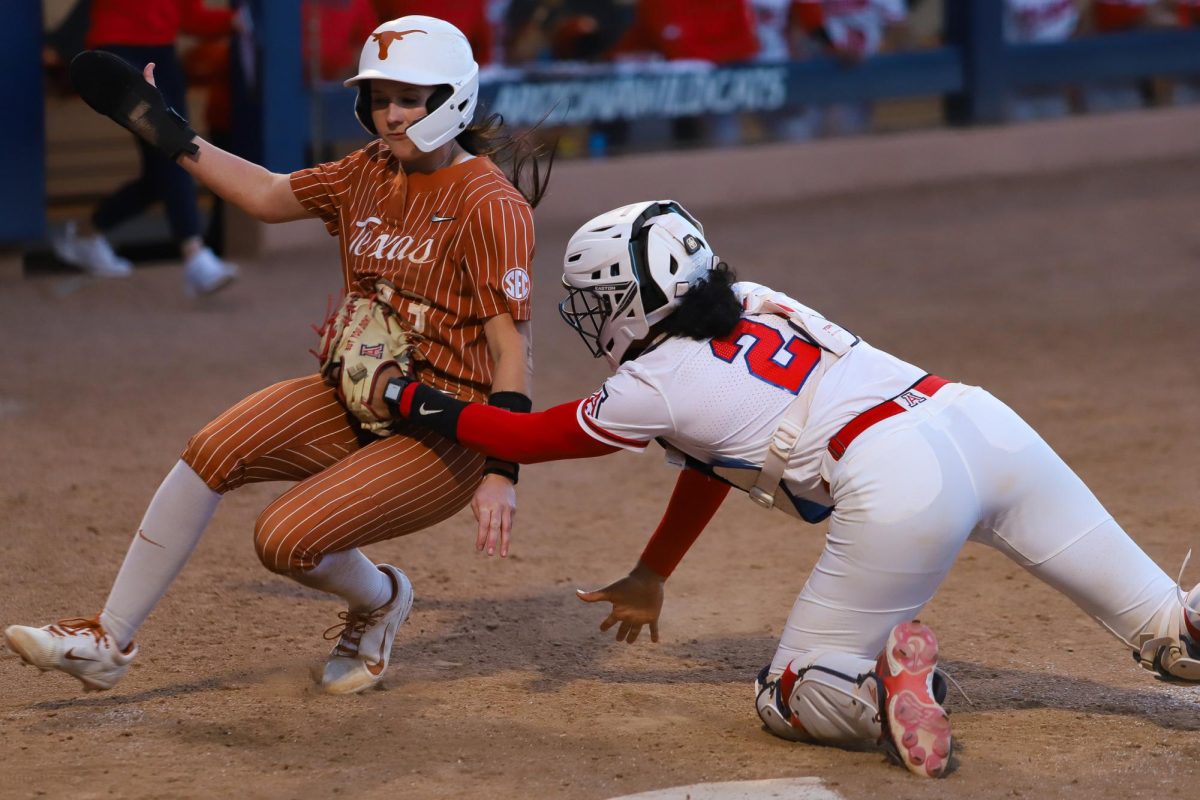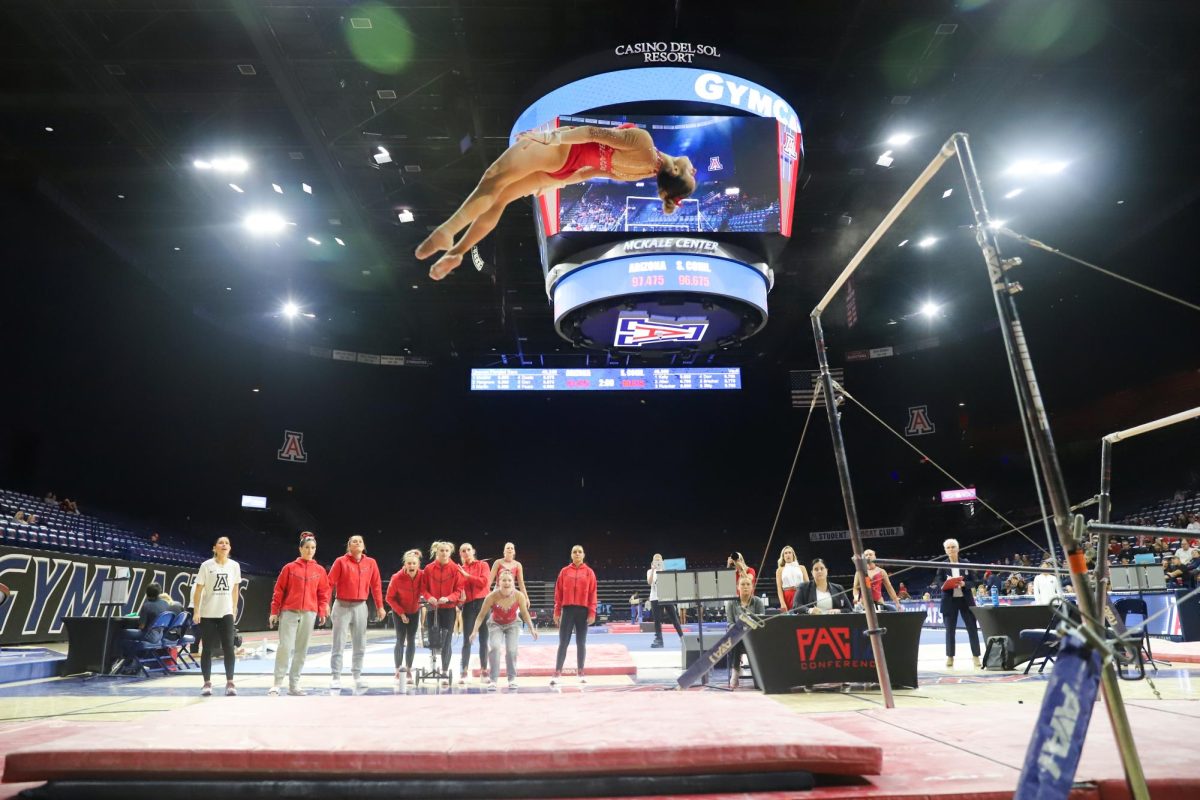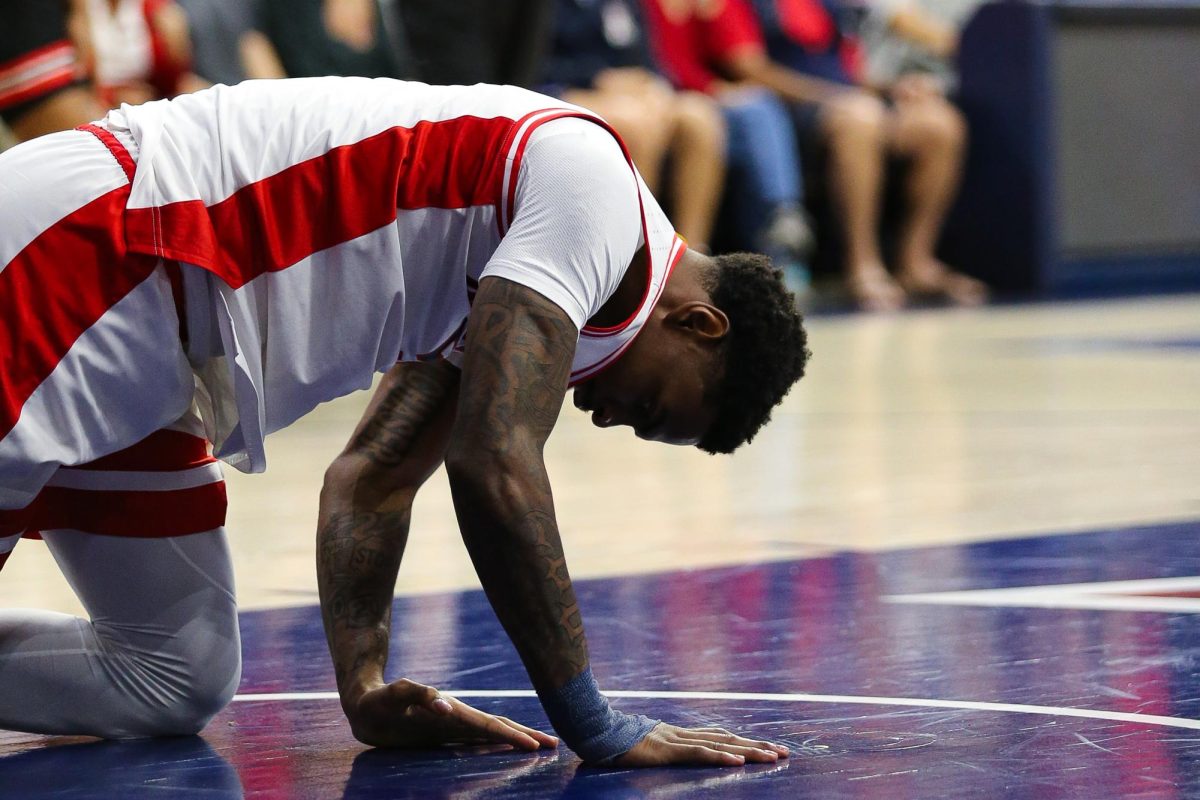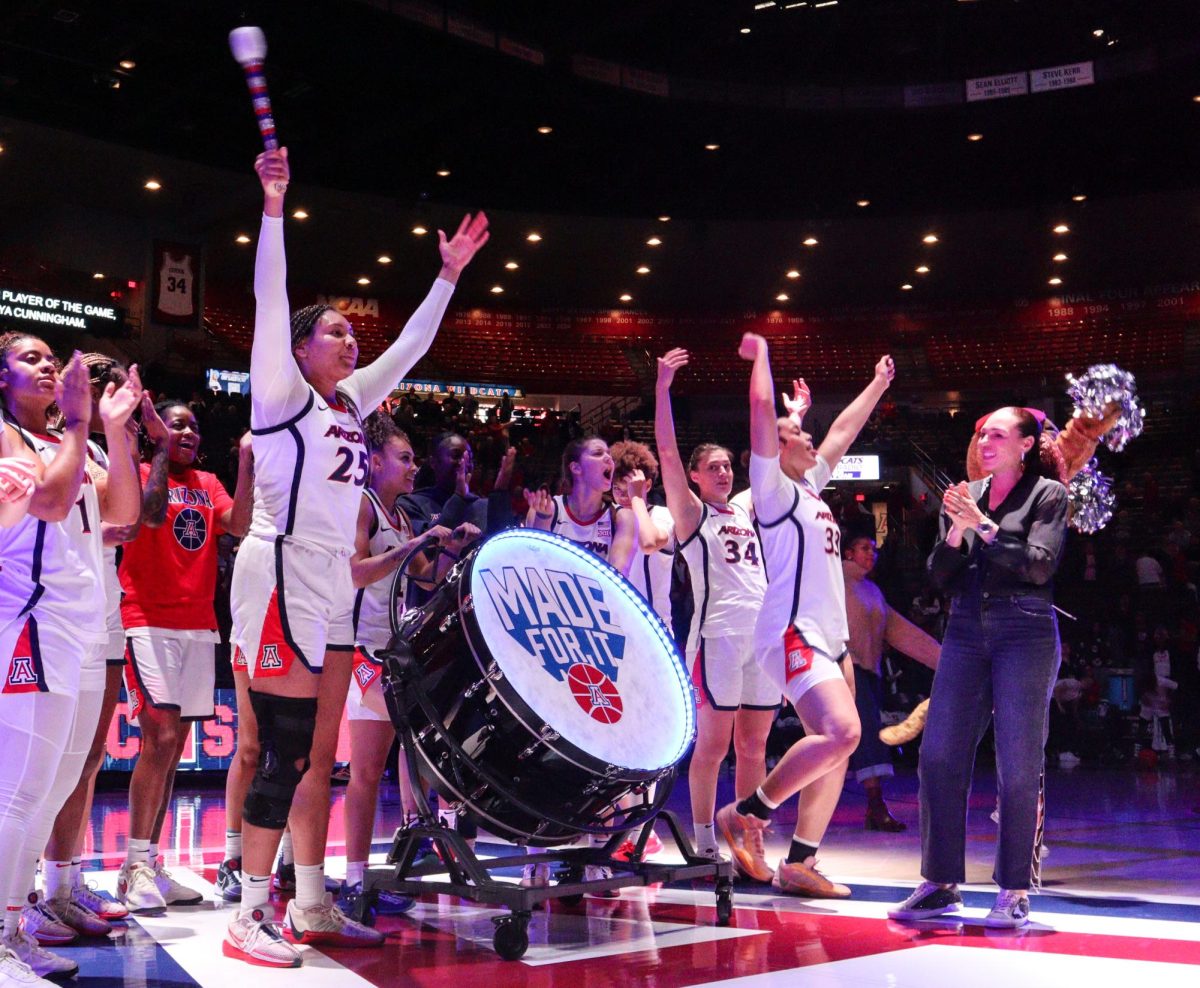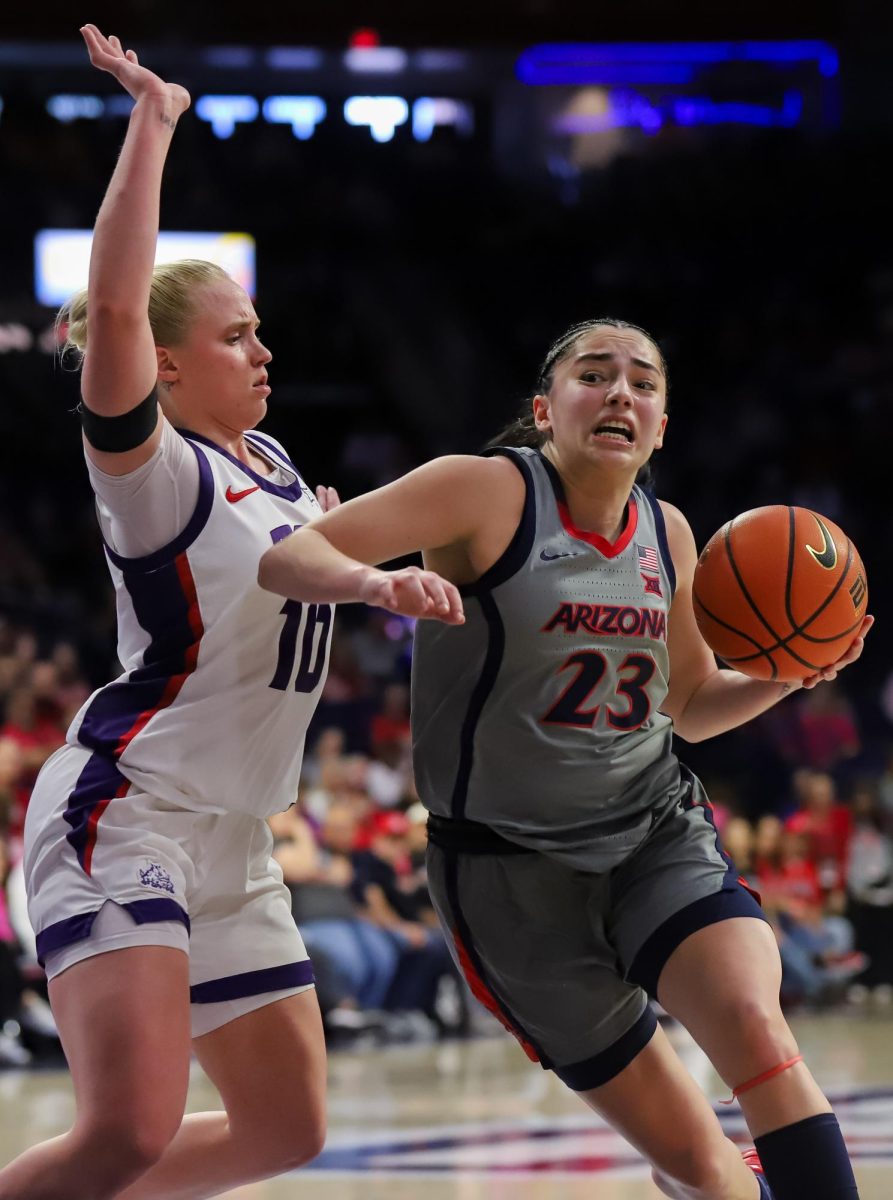With Pac-12 play finally starting up, it’s time to look back at how each team fared in nonconference play with the year’s first edition of weekly basketball power rankings. The Ratings Percentage Index (RPI), and Strength of Schedule, SOS, information come from CBS Sports.
1. No. 3 Arizona (12-0) [RPI 6, SOS 43]
Notable wins: vs. No. 13 Florida 65-64; vs. No. 19 San Diego State 68-67; vs. Miami 69-50; vs. Southern Miss 63-55
Notable losses: None
With the nonconference season in the books, No. 3 Arizona distanced itself as the clear leader of the Pac-12. The Wildcats didn’t earn this honor by staying spotless in easy games — as of late they’ve accumulated some impressive victories. Senior guard Mark Lyons helped propel the UA past Florida and San Diego State by the slimmest of margins, but the bulk of the schedule offered some tough contests. Arizona has four victories over teams in the RPI top-50 on way to the 43rd hardest schedule in the nation. It hasn’t quite been Murder’s Row, but with Lyons steadily improving at the point and two Wildcats playing at an All-Conference level (sophomore Nick Johnson and senior Solomon Hill), this team is poised to capture coach Sean Miller’s second Pac-12 championship in three seasons.
2. Colorado 10-2 [RPI 5; SOS 7]
Notable wins: vs. Baylor 60-58; vs. Colorado State 70-61; vs. Murray State 81-74
Notable losses: at No. 6 Kansas 90-54; at Wyoming 76-69
While the battle for No. 1 is clear, three teams all make a legitimate threat for the conference crown by amassing the second best resume throughout the start of the season. While UCLA might be more talented and Oregon has the most impressive victory of the bunch, junior Andre Roberson and the Buffs have been the most consistent. Colorado played the seventh hardest non-conference schedule in the country, and yet only fell to a still-undefeated Wyoming team and No. 6 Kansas. The fact that the Jayhawks crushed Tad Boyle’s squad by 36 shows this team isn’t quite ready for prime time, but they’ll still be a constant threat throughout conference play.
3. UCLA 10-3 [RPI 43; SOS 50]
Notable wins: vs. No. 12 Missouri 97-94 OT; vs. Indiana State 86-59; vs. Cal State Northridge 85-56
Notable losses: vs. Cal Poly 70-68; vs. No. 15 Georgetown 78-69; vs. No. 19 San Diego State 78-69
The Bruins’ slow start can be somewhat excused by the late addition of freshman Shabazz Muhammad. While the freshmen took part in all three loses, including falling to Cal Poly at home, Muhammad has already proven he’s the team’s best player. The nation’s No. 2 overall recruit is averaging 19.6 points per game and willed his team to victory in overtime against then-No. 7 Missouri. Now that Muhammad and the other young players have had time to gel, including Kyle Anderson who leads the team with 8.5 rebounds, UCLA should return close the their lofty preseason expectations. With that said, though, coach Ben Howland already had Josh Smith and Tyler Lamb transfer mid-season, cutting away at some of the depth that gave this team so much potential.
4. Oregon 11-2 [RPI 53, SOS 198]
Notable wins: at UNLV 83-79; vs. Nebraska 60-38
Notable losses: vs. No. 14 Cincinnati 77-66; at UTEP 91-84 3OT
The Ducks employ a balanced attack, with five players averaging between the range of 11.1 and 9.8 points per game. The lack of a superstar didn’t hinder Oregon in its impressive 83-79 victory at UNLV and it’s taken care of business by going a perfect 9-0 against teams outside the RPI 150. The eleven point loss to Cincinnati doesn’t sting too badly, but the triple overtime defeat at UTEP does.
5. Stanford 9-4 [RPI 64, SOS 61]
Notable wins: vs. Northern Iowa 66-50, vs. Northwestern 70-68
Notable losses: vs. Belmont 70-62; vs. No. 9 Minnesota 66-63; vs. No. 12 Missouri 78-70; at No. 23 NC State 88-79
The Cardinal started the season as a darkhorse in the conference and has yet to do anything to change that. Of course Stanford hasn’t done anything to back it up, either. All four of Stanford’s losses come against teams ranked No. 33 or higher in the RPI and have taken care of everyone else. But that’s the problem — the Cardinal didn’t beat anyone of real significance. Northwestern and Northern Iowa are fine teams, but neither is likely to be dancing in March. Still, the tandem of forward Dwight Powell and guard Chasson Randle gives this team enough fire power to hang around this season.
6. California (8-4) [RPI 74; SOS 58]
Notable wins: vs. UC Santa Barbara 68-59
Notable losses: vs. Harvard 67-62; at Wisconsin 81-56; vs. UNLV 76-75; vs. No. 16 Creighton 74-64
Sophomore Allen Crabbe is one of the nations’ best scorers, averaging an impressive 20.9 points per game on just 14.7 field goal attempts. Fellow guard Justin Cobbs isn’t quite as lethal as Crabbe, with 16.4 points per game, but he’s shooting an even better percentage from the floor. But as good as this backcourt duo is, Cal didn’t exactly light the world on fire during its nonconference play. The losses to UNLV and No. 16 Creighton are excusable, but the Golden Bears had a mediocre 3-4 record against top-150 RPI opponents. Cal will need to get more from its supporting players if they want to make a splash in the Pac-12.
7. Arizona State (11-2) [RPI 75, SOS 209]
Notable wins: vs. UC Northridge 87-76; vs. Arkansas 83-68
Notable losses: vs. No. 16 Creighton 87-73; vs. DePaul 78-61
Talent-wise, this Arizona State team isn’t the seventh best team in the conference, but for the most part the Sun Devils took care of business and slip into the spot by default. Freshman Jahii Carson, who was held out all of last season for eligibility issues, looks like the real deal. Carson leads the team in points (17.7 ppg) and assists (5.7) and should give Muhammad a run for Pac-12 Freshman of the Year honors. He immediately made the Sun Devils more dangerous this season, but their 11-2 record is misleading. Nine of ASU’s wins came against teams outside the RPI 150 and its 17-point loss at home to Big East bottom feeder DePaul gives a more accurate look at the Sun Devils’ ability.
8. Washington (8-5) [RPI 94, SOS 46]
Notable wins: vs. St. Louis 66-61; vs. Seton Hall 84-73 OT
Notable losses: vs. Albany 63-62; vs. Nevada 76-73; vs. Colorado State 73-55; vs. No. 8 Ohio State 77-66
Last season’s exodus of talent has left the Huskies thin and through the nonconference slate they looked mediocre. Junior guard C.J. Wilcox is talented and senior Aziz N’Diaye gives the Huskies an experienced 7-footer down low, but Washington just isn’t the same as it’s been in recent years. The Huskies had the 46th toughest schedule, but went 2-4 against top-150 RPI teams. Nice wins against Seton Hall and St. Louis are cancelled out by close, but ugly, losses to Nevada and Albany at home.
9. Oregon State (10-3) [RPI 204, SOS 340]
Notable wins: None
Notable losses: vs. Towson 67-66 OT; vs. Alabama 65-62; vs. No 6 Kansas 84-78
The Beavers’ record looks nice until you take a glance at their strength of schedule — not even a neutral court game against Kansas could boost the cakewalk of a nonconference slate OSU had. The Beavers’ schedule ranks 340 out of 347 teams and they have yet to beat a team inside the RPI top-150. Oregon State was within three points in the final minute against Kansas, so clearly Craig Robinson’s team can compete with the big boys. The lack of a schedule might not have been so crucial if the Beavers beat Towson at home in overtime — but they didn’t and will need to do a lot in Pac-12 play to recover.
10. Washington State (9-4) [RPI 172, SOS 273]
Notable wins: None
Notable losses: at Pepperdine 58-56 OT; vs. No. 6 Kansas 78-41; vs. No. 10 Gonzaga 71-64
Oh how a couple seconds make all the difference. DaVonte Lacy tied the Cougars at 69 apiece with just seconds remaining against Gonzaga, but WSU let guard Kevin Pangos drive the length of the court to hit a game-winning layup and spoil a huge upset bid in Pullman. Instead of potentially having a signature win, the Cougars are left with a weak resume that doesn’t feature a single top-150 RPI victory. In fact, Washington State’s best victory is a nine-point win at home against Fresno State and its 218th ranked RPI. Senior Brock Motum is one of the Pac-12’s best forwards, averaging 19.7 points per game, and this team has some danger to it. The nonconference play just didn’t allow them to show much of it.
11. Utah (8-4) [RPI 125; SOS 88]
Notable wins: vs. Boise State 76-55; vs. Central Michigan 67-51
Notable losses: vs. Sacramento State 74-71; at Brigham Young 61-58
The Utes will most likely be the bottom feeder of the Pac-12 come season’s end, but the nonconference play already gave them two more wins than last year. The bulk of the games came against teams outside the RPI top-150 and two wins came against Division II opponents. Still, Utah did beat a top-50 team in Boise State and the cupboard isn’t bare for coach Larry Krystkowiak like last season.
12. Southern California (5-8) [RPI 153, SOS 24]
Notable wins: vs. Texas 59-53 OT; vs. Dayton 63-61 OT
Notable losses: at Georgia 64-56; at Nebraska 63-51; vs. No. 9 Minnesota 71-57; vs. No. 11 Illinois 94-64
The Trojans are much healthier this season and Kevin O’Neill’s crew is supposed to be a factor in the Pac-12. While the team has some talent, USC is the only team entering conference play with a losing record. One main reason for the poor record is a brutal schedule — the Trojans struggled through the 24th hardest slate of games, with nine games coming against top-150 RPI teams. By the end of the year, the Trojans should move toward the middle, but with a 5-8 record, they clearly start at the bottom.
-Kyle Johnson is a journalism junior, he can be reached at sports@wildcat.arizona.edu or on Twitter via WildcatSports or KyleJohnsonUA



